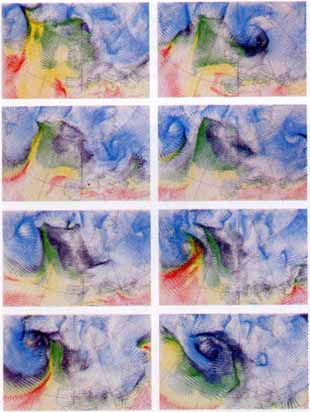dynamic design |
|
|

Dynamic Design
A paradigmatic change: the introduction of limitless time and space parameters indicates that the result oriented planning makes no sense anymore. What we need are methods directed to the process, approaches where the planner becomes more of an organizer than a classic designer.
To transgress the limits dictated by the physicality and zoning ideas, to approach the urban in terms of standards of interaction within pervasive and opened configurations. To free the city from the rigid structures and to take it as a dynamic network of relations. Methods based not in the context, but in the chance, the incidental.
To abandon the classic parameters - control, optimization, previsibility and apreensibility. To adopt recombination instruments that configures heterogeneous spaces.
To produce mutant and contingent influences and affiliations that resist to stable alignments. Vast residual spaces that can be activated by programmatical innovation, technological effect and events.
Strategies that provoke processes in great measure unexpected, on which one cannot intervene directly. A mapping of the inform, the dynamics and the intensities of large territories.
References
U. Königs, On Grafting, Cloning, and Swallowing Pills, in Daidalos, 72, Berlin, 1999. P. Versteegh, Urban Mapping, in Fields, The Berlage Institute, Amsterdan, 1997.
J. Kipnis, Towards a New Architecture, in Folding in Architecture, AD, , London, 1993.
Image:
J. Kipnis e B. Shirdel. Estudo de planejamento urbano para Haikou (China).